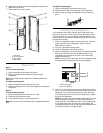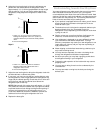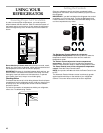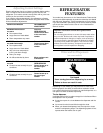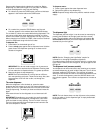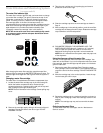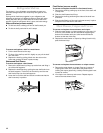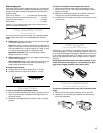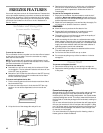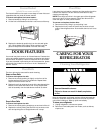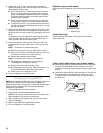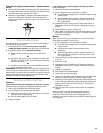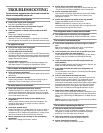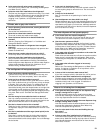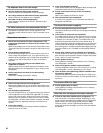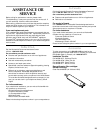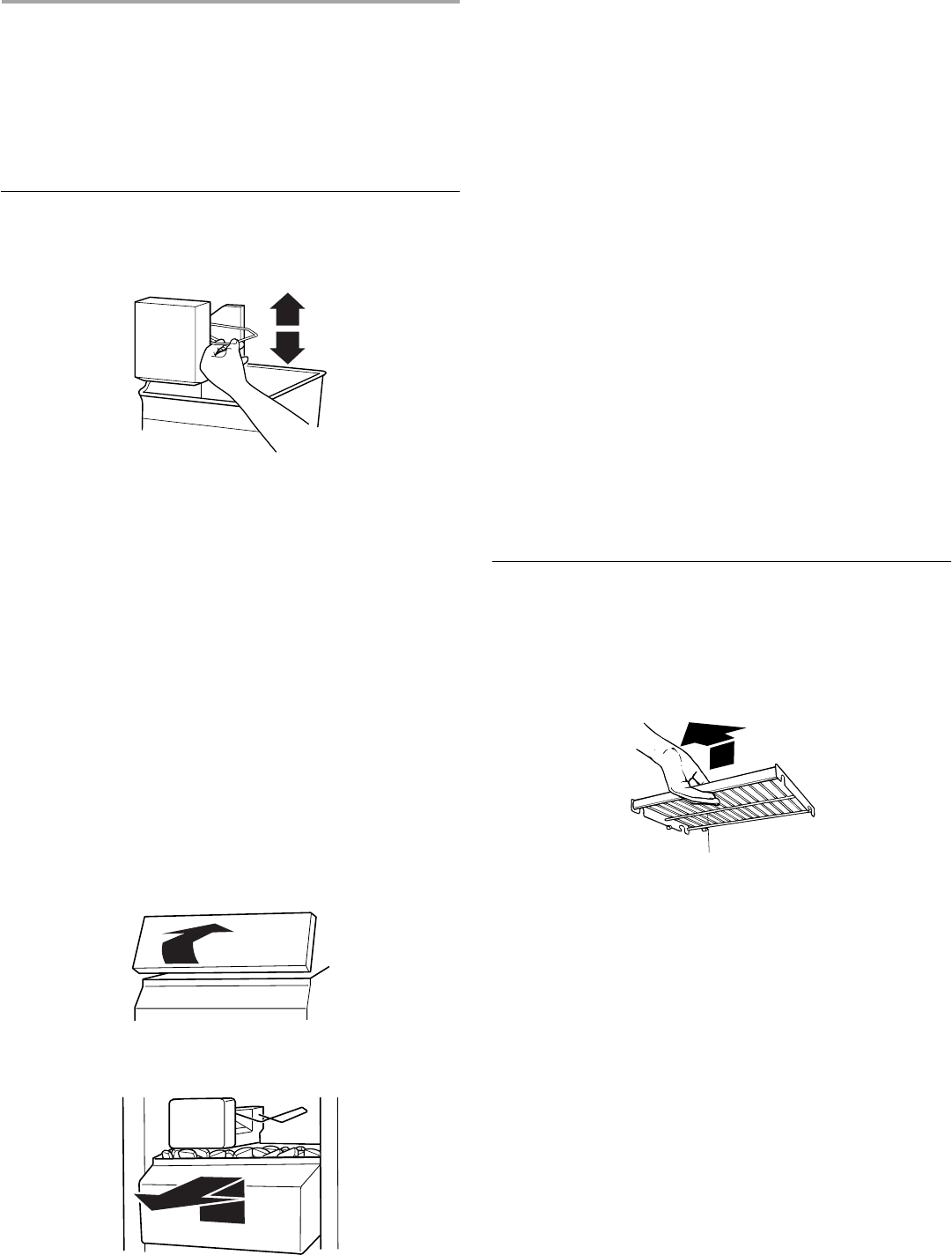
16
FREEZER FEATURES
Your model may have some or all of these features. Features that
can be purchased separately as product accessories are labeled
with the word “Accessory.” Not all accessories will fit all models.
If you are interested in purchasing one of the accessories, please
call the toll-free number on the cover or in the “Assistance or
Service” section
Ice Maker and Storage Bin
(on some models - Accessory)
To turn the ice maker on:
The on/off switch for the ice maker is a wire shut-off arm located
on the side of the ice maker. To turn the ice maker on, simply
lower the wire shut-off arm.
NOTE: The ice maker will not make ice until the freezer is cold
enough. Allow 24 hours to produce the first batch of ice. Discard
the first three batches of ice produced.
To turn the ice maker off:
■ Automatic turn off: As ice is made, the ice cubes will fill the
ice storage bin. The ice cubes will raise the wire shut-off arm
to the OFF (arm up) position.
■ Manual turn off: Lift the wire shut-off arm to the OFF (arm up)
position and listen for the click to make sure the ice maker
will not continue to operate.
To remove and replace the ice bin:
1. Pull the covering panel out from the bottom and then slide it
back toward the rear.
2. Lift the wire shut-off arm so it clicks into the OFF (arm up)
position. Ice can still be dispensed, but no more can be
made.
3. Lift up the front of the storage bin and pull it out.
4. Replace the bin by pushing it in all the way or the dispenser
will not work. Push the wire shut-off arm down to the ON
position to restart ice production. Make sure the door is
closed tightly.
To care for ice storage bin or bucket:
1. Empty the ice container. Use warm water to melt the ice if
necessary. Never use anything sharp to break up the ice in
the bin or bucket. This can cause damage to the ice container
and the dispenser mechanism.
2. Wash with a mild detergent, rinse well and dry thoroughly. Do
not use harsh or abrasive cleaners or solvents.
REMEMBER:
■ Allow 24 hours to produce the first batch of ice.
■ Discard the first three batches of ice produced to avoid
impurities that may be flushed out of the system.
■ The quality of your ice will be only as good as the quality of
the water supplied to your ice maker.
■ Avoid connecting the ice maker to a softened water supply.
Water softener chemicals (such as salt) can damage parts of
the ice maker and lead to poor quality ice. If a softened water
supply cannot be avoided, make sure the water softener is
operating properly and is well maintained.
■ It is normal for the ice cubes to be attached at the corners.
They will break apart easily.
■ Do not force the wire shut-off arm up or down.
■ Do not store anything on top of the ice maker or in the ice
storage bin.
Freezer Shelf
To remove and replace the shelf:
1. Remove the shelf by lifting it up and pulling it straight out.
2. Replace the shelf by putting it over the supports and lowering
it into place.
Frozen food storage guide
Storage times will vary according to the quality and type of food,
the type of packaging or wrap used (should be airtight and
moisture-proof), and the storage temperature. Ice crystals inside
a sealed package are normal. This simply means that moisture in
the food and air inside the package have condensed, creating ice
crystals.
Put no more unfrozen food into the freezer than will freeze within
24 hours (no more than 2-3 lb of food per cubic foot [907-1,350 g
per L] of freezer space). Leave enough space in the freezer for air
to circulate around packages. Be careful to leave enough room
for the door to close tightly.
For more information on preparing food for freezing, check a
freezer guide or reliable cookbook.



